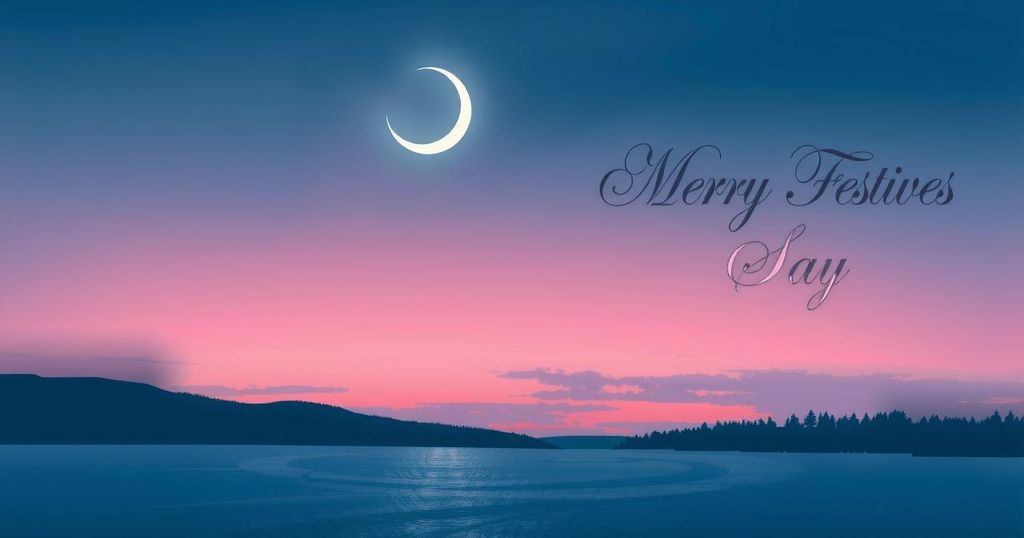Eid ul Fitr 2025: Moonsighting Disagreement Sparks Controversy in Saudi Arabia

Eid ul Fitr 2025 began on March 30 in Saudi Arabia and neighboring countries, despite astronomers predicting no crescent moon visibility. Saudi officials announced the sighting, contrary to scientific forecasts, leading to public skepticism. Experts highlighted visibility issues related to moon conditions and a partial solar eclipse, emphasizing the ongoing debate between lunar visibility and adherence to pre-established calendars.
Eid ul Fitr 2025 commenced on March 30 in Saudi Arabia and several neighboring countries, despite astronomers indicating the crescent moon’s visibility was improbable. Saudi Arabia’s announcement came shortly after 3 PM (UK time) on March 29, marking the end of Ramadan and the arrival of Shawwal, the month that follows, which includes three days of celebration for Eid ul Fitr.
The declaration occurred on the 29th day of Ramadan, a crucial time for moonsighting observations according to Islamic tradition. However, UK astronomers from HM Almanac Office reported that the crescent moon would likely be obscured that evening. Their forecast emphasized that lunar sightings would be highly challenging on March 29 across the Middle East and parts of the US, with better visibility possible the following days.
In contradiction to the astronomers’ projections, Saudi officials from the Two Holy Mosques confirmed that the crescent moon was sighted in the country. Local reports indicated limited possibilities of observation, noting that it remained visible only for a fleeting 7 to 8 minutes, depending on atmospheric clarity. Various astronomical observatories within Saudi Arabia participated in the sighting efforts.
One observer, Abdullah Al-Khudairi, asserted that disagreements about the moon sighting stem from amateur observers rather than experts. He claimed that the sky conditions were favorable for spotting the crescent moon. However, skepticism persisted among commentators who doubted the authenticity of the official sighting, suggesting that the moon’s timing and visibility did not align with claims made by Saudi authorities.
Critics voiced their concerns via social media, demanding evidence of the sighting and expressing dissatisfaction with the reliance on a predetermined calendar. The New Crescent Society in the UK echoed these sentiments, forecasting that sightings in Saudi Arabia were unlikely to be scientifically validated. They condemned the continuous occurrences of erroneous moon sightings that often coincide with the Umm al Qura calendar.
Dr. Zahid Nawaz, a UK moonsighting expert, detailed the various factors inhibiting crescent visibility, including moon age and atmospheric conditions, asserting that realistic observation methods should be prioritized. He also highlighted the coincidence of the lunar new moon with a partial solar eclipse, further complicating sighting opportunities. Some in the UK follow Saudi announcements, and local events, such as public Eid celebrations, are influenced by these dates.
The announcement of Eid ul Fitr 2025 in Saudi Arabia catalyzed a debate between astronomical predictions and official proclamations regarding crescent moonsighting. While Saudi officials declared the moon was sighted, experts raised doubts due to visibility issues tied to lunar conditions and eclipse effects. The resulting discourse emphasizes the ongoing conflict between traditional moonsighting practices and scientific validation, reflecting a broader context within the Islamic community regarding calendar adherence and lunar visibility.
Original Source: www.birminghammail.co.uk






